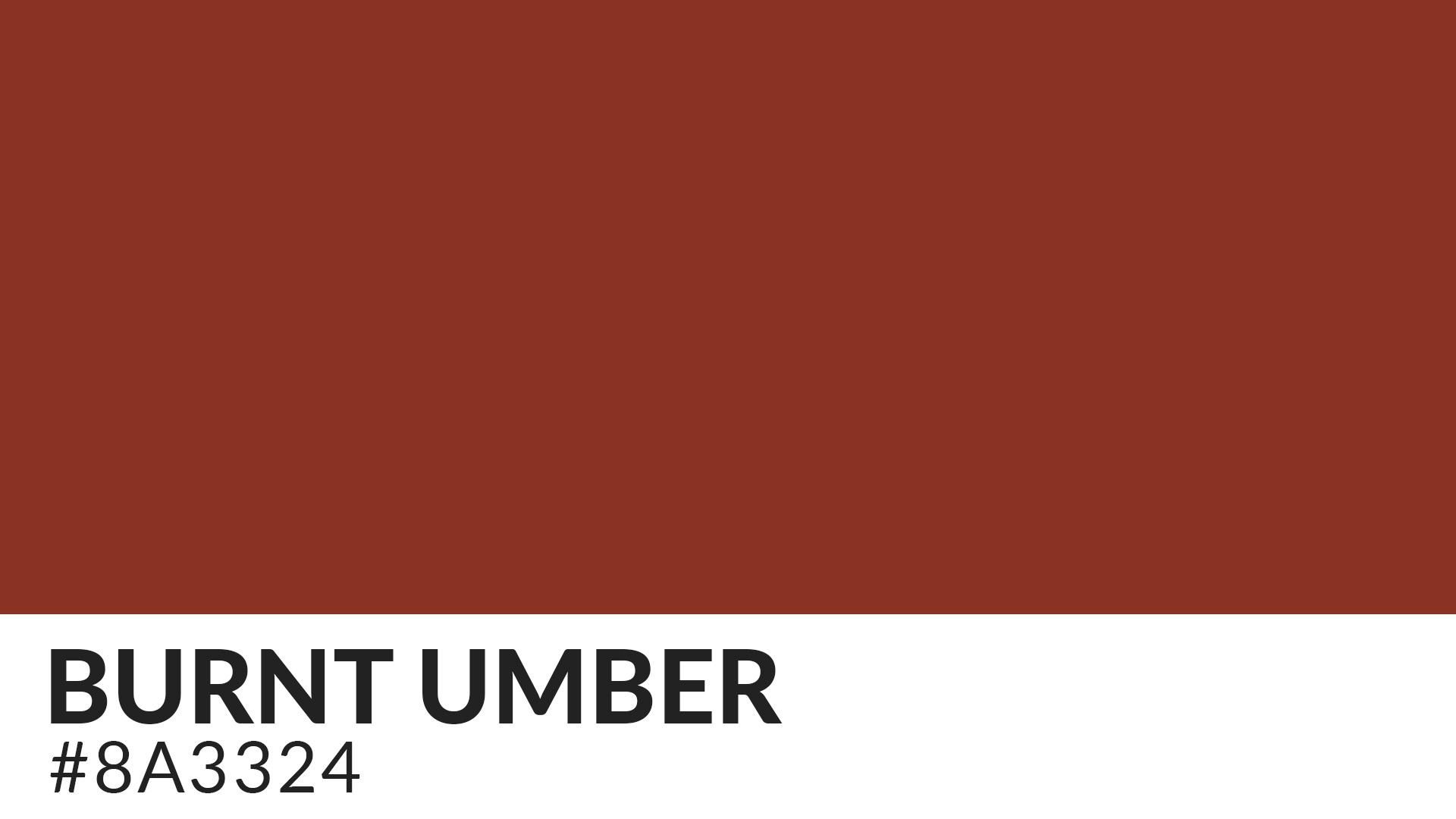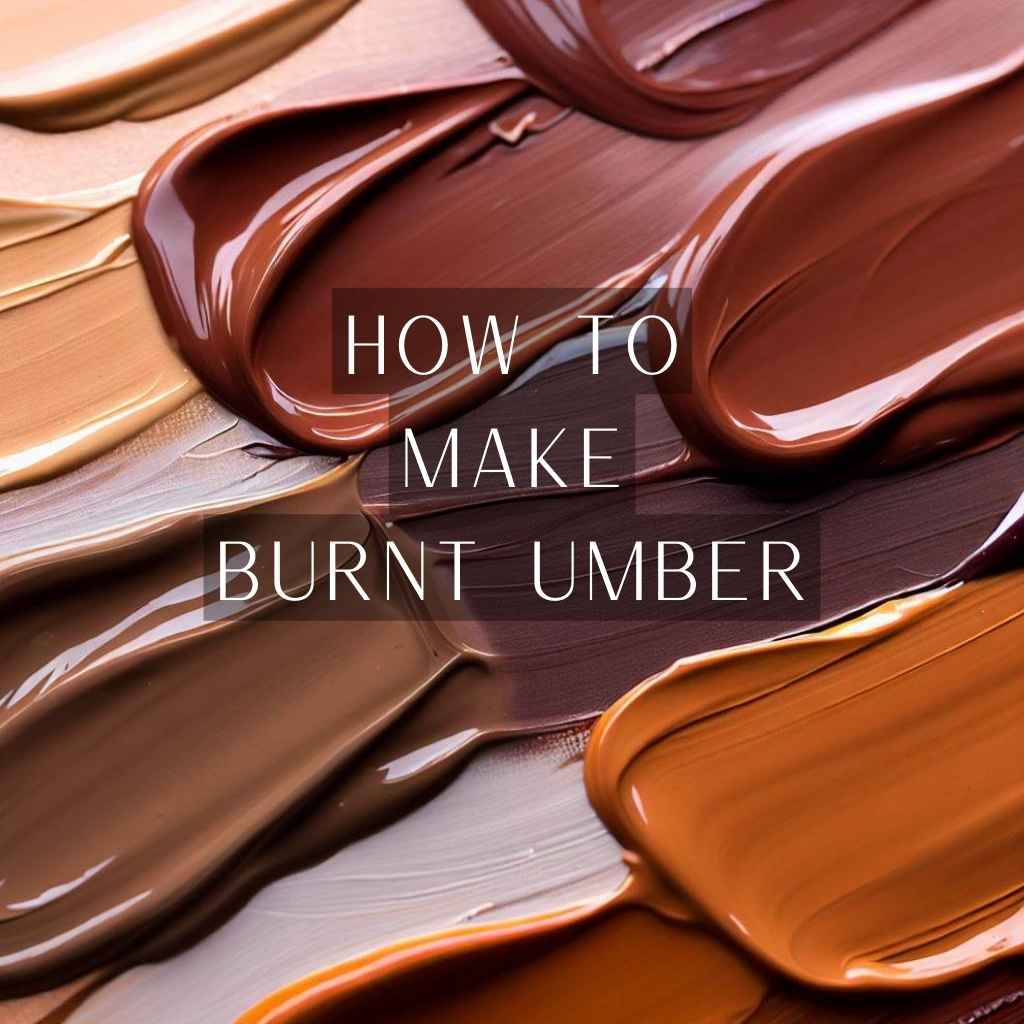When you're diving into the world of colors, burnt umber is one of those timeless hues that deserves all the attention. Imagine a warm, rich brown that brings depth and character to any project. Whether you're an artist, designer, or just someone who loves playing with colors, burnt umber is your secret weapon. It's like the unsung hero of the color palette, adding that perfect touch of sophistication without screaming for attention.
Now, you might be wondering, "What exactly is burnt umber?" Well, buckle up because we're about to take you on a journey through its history, uses, and why it's such a game-changer. This isn't just another color; it's a shade with a story, a vibe, and a whole lot of versatility. Think of it as the friend who's always there for you, no matter the occasion.
So, whether you're here to learn about its origins, how to use it in your next masterpiece, or simply appreciate its charm, you're in the right place. Let's dive in and uncover the magic of burnt umber. And trust me, by the end of this, you'll be seeing the world through burnt umber-tinted glasses.
Read also:Victoria De Angelis Nude Unveiling The Truth And Debunking The Myths
Table of Contents
- What is Burnt Umber?
- The History of Burnt Umber
- Uses of Burnt Umber in Art
- Burnt Umber in Modern Design
- Mixing Burnt Umber with Other Colors
- Burnt Umber vs Other Browns
- Burnt Umber in Nature
- The Psychology of Burnt Umber
- Burnt Umber in Home Decor
- Conclusion: Why Burnt Umber Matters
What is Burnt Umber?
Burnt umber is more than just a color; it's an experience. Imagine taking raw umber, a natural brown pigment, and giving it a little toast in the oven. The result? A deep, warm brown with a hint of red that's practically begging to be used in your next project. It's like when you char a marshmallow just right – not too burnt, not too gooey, but perfectly in the middle.
This color has been around for centuries, and for good reason. Artists love it because it's versatile, mixes well with other colors, and adds that touch of earthiness that's hard to replicate. Whether you're painting landscapes, portraits, or abstracts, burnt umber is your go-to shade.
But here's the kicker: it's not just for artists. Designers, decorators, and even fashionistas have caught on to the charm of burnt umber. It's like that one outfit that works for both casual hangouts and fancy dinners. You can't go wrong with it.
The History of Burnt Umber
Let's rewind the clock and talk about where burnt umber came from. This color has roots that go way back, like ancient times back. The word "umber" itself comes from the Latin word "umbra," which means shadow. So, it's basically a color that's been casting shadows for centuries.
In the olden days, artists used natural pigments found in the earth to create their colors. Burnt umber was one of those pigments, and it quickly became a favorite. Why? Because it was reliable, easy to work with, and added that depth that other colors just couldn't match.
Fast forward to today, and burnt umber is still as popular as ever. It's been used in everything from Renaissance paintings to modern digital art. Talk about staying power, right?
Read also:Burger King Crown Guy The Untold Story You Need To Know
Fun Facts About Burnt Umber's History
- Burnt umber was first used by early humans in cave paintings.
- It was a staple in the Renaissance period, appearing in masterpieces by Michelangelo and Leonardo da Vinci.
- Modern technology has allowed us to create synthetic versions of burnt umber, but the original natural pigment is still highly prized.
Uses of Burnt Umber in Art
Artists have a soft spot for burnt umber, and for good reason. It's like the Swiss Army knife of colors – versatile, reliable, and always ready to help. Whether you're working with oils, watercolors, or acrylics, burnt umber has got your back.
One of the coolest things about burnt umber is how well it mixes with other colors. Need a darker shade? Mix it with black. Want something warmer? Add a touch of yellow. It's like having a color buddy who's always ready to experiment with you.
But wait, there's more! Burnt umber is also great for shading and adding depth to your artwork. Think of it as the background singer who makes the lead vocals sound even better. It might not be the star of the show, but it's essential to the overall performance.
Top Tips for Using Burnt Umber in Art
- Use it as an underpainting to add warmth and depth to your work.
- Mix it with white for a range of earthy tones.
- Experiment with layering burnt umber to create rich textures.
Burnt Umber in Modern Design
Designers have also caught on to the burnt umber trend, and it's no surprise why. This color adds a touch of elegance and sophistication to any design project. Whether you're working on a website, a logo, or even packaging design, burnt umber can elevate your work to the next level.
In the world of digital design, burnt umber is often used as a background color to create a warm, inviting atmosphere. It's like that cozy corner of a café where you can just chill and enjoy the moment. And let's not forget about typography – burnt umber can make text pop without being too overwhelming.
But it's not just about digital stuff. Burnt umber is also making waves in the world of product design. From furniture to fashion, this color is being used to create pieces that are both functional and stylish. It's like having your cake and eating it too – you get form and function in one package.
How to Incorporate Burnt Umber in Design
- Use it as a background color for a warm, inviting vibe.
- Pair it with complementary colors like blue or green for contrast.
- Experiment with textures to add depth to your designs.
Mixing Burnt Umber with Other Colors
Mixing colors is like cooking – sometimes you get something amazing, and sometimes it's a disaster. But with burnt umber, the odds are in your favor. This color plays well with others, making it a great choice for experimenting with color combinations.
For example, mixing burnt umber with blue can create a rich, moody shade that's perfect for landscapes. Add a touch of yellow, and you've got a warm, earthy tone that's great for portraits. And if you're feeling adventurous, try mixing it with white for a range of light browns that can add depth to any project.
But here's the thing: mixing colors isn't just about the end result. It's about the journey, the experimentation, and the joy of discovery. So, grab your paints, your brushes, and let's get mixing!
Color Combinations with Burnt Umber
- Burnt umber + blue = moody landscapes
- Burnt umber + yellow = warm portraits
- Burnt umber + white = earthy tones
Burnt Umber vs Other Browns
Now, you might be wondering, "What makes burnt umber so special compared to other browns?" Great question! While all browns share some similarities, burnt umber has a few tricks up its sleeve that set it apart.
First off, burnt umber has that warm, reddish undertone that gives it a unique character. Unlike other browns, which can sometimes feel flat or dull, burnt umber adds depth and dimension to any project. It's like the difference between a regular cup of coffee and a perfectly brewed espresso – both are great, but one just has that extra something.
And let's not forget about its versatility. Whether you're painting a sunset, shading a portrait, or designing a website, burnt umber can handle it all. It's like that one friend who's great at everything – art, design, even karaoke.
Why Choose Burnt Umber Over Other Browns?
- Warm, reddish undertones add depth
- Versatile for a variety of projects
- Reliable and easy to work with
Burnt Umber in Nature
Nature is full of amazing colors, and burnt umber is no exception. This color can be found in everything from the soil beneath our feet to the bark of trees. It's like nature's way of reminding us to appreciate the little things in life.
Take a walk in the forest, and you'll see burnt umber everywhere. The leaves in autumn, the rocks by the river, even the feathers of some birds – all of them carry hints of this beautiful color. It's like nature's own little secret, waiting for us to discover it.
And let's not forget about the animals. Some creatures, like deer and bears, have fur that's tinged with burnt umber. It's like they're wearing nature's signature color, and it suits them perfectly.
The Psychology of Burnt Umber
Colors have a way of affecting our mood and emotions, and burnt umber is no exception. This color is often associated with warmth, stability, and reliability – all qualities that make it a favorite among artists and designers.
Studies have shown that earthy tones like burnt umber can have a calming effect on people. It's like a hug from nature, reminding us to slow down and appreciate the moment. And let's not forget about its association with creativity. Artists and designers often use burnt umber to spark their imagination and inspire new ideas.
But here's the thing: everyone experiences color differently. While some people might find burnt umber comforting, others might see it as a challenge or a call to action. It's all about perspective, and that's what makes color psychology so fascinating.
Burnt Umber in Home Decor
When it comes to home decor, burnt umber is a color that can truly transform a space. It's like that one piece of furniture that ties the whole room together. Whether you're decorating a cozy living room or a modern kitchen, burnt umber can add warmth and character to your home.
One of the best things about using burnt umber in home decor is its versatility. It can be used as a dominant color or as an accent, depending on your taste. Think about using burnt umber wallpaper, curtains, or even furniture to add that touch of earthiness to your space.
And let's not forget about accessories. A few burnt umber throw pillows or a rug can go a long way in creating a warm, inviting atmosphere. It's like adding a sprinkle of cinnamon to your favorite dish – it enhances the whole experience.
Tips for Using Burnt Umber in Home Decor
- Use it as a dominant color for a bold look
- Pair it with neutral tones for a balanced aesthetic
- Add accessories for a pop of color
Conclusion: Why Burnt Umber Matters
So, there you have it – burnt umber in all its glory. From its rich history to its versatile uses, this color has something special to offer everyone. Whether you're an artist, designer, or just someone who loves playing with colors, burnt umber is a must-have in your toolkit.
Remember, colors have the power to inspire, comfort, and transform. Burnt umber is no exception


